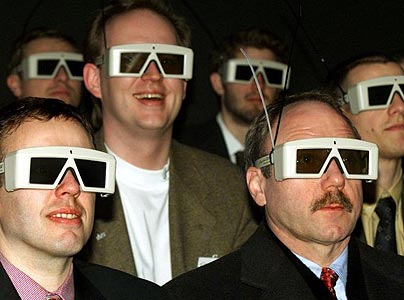 At CES last January, I saw many terrific technologies on display, and I tried to look for trends in them. In my analysis I noticed a certain number and letter that kept reappearing: 3D.
At CES last January, I saw many terrific technologies on display, and I tried to look for trends in them. In my analysis I noticed a certain number and letter that kept reappearing: 3D.
The 3D fad is one flash in the pan that keeps appearing and disappearing. In the fifties and sixties, it was a gimmick to get the audiences in on otherwise bad horror movies. It made a comeback in the eighties, for films such as Jaws 3-D and Amityville 3-D. Once again, the films were not exactly the best quality.
In 2003, director Robert Rodriguez decided to release the third Spy Kids movie in 3D, and it turned out to be quite a summer blockbuster. Granted, the film was not Oscar material, but it did produce a great profit for an August movie.
However, this summer has been loaded with 3D films with My Bloody Valentine 3D, Coraline, Monsters vs. Aliens, Up, Ice Age 3, Final Destination, Cloudy with a Chance of Meatballs, not to mention a 3D release of the first two Toy Story movies as well as the Holiday offering of A Christmas Carol with Jim Carrey. Even the first twenty minutes of the last Harry Potter movie incorporated this technology, with no more red and blue glasses.
Most of these movies were box office hits, and they will probably inspire blockbuster hits to be in 3D as well. I believe James Cameron’s long awaited Avatar movie will be in 3D, and so will the game. By the way, I got a chance to review the game at PAX, and you can read about that here.
At PAX, I found that two graphics companies, Nvidia and Zalman, were working hard to bring the 3D experience home to gamers. Granted, most television sets are not capable of 3D rendering, but companies like Samsung, Viewsonic, Panasonic, and other big names are really getting into it.
In short, it feels like this 3D fad is brewing, but these 3D receptive TVs are expensive to most consumers. Not only that, 3D really only looks impressive on large screen TVs that the average consumer can’t really afford. So it would appear that 3D getting bigger, but if only the rich can afford it in their homes, then what good is it?
However, it is good that 3D is going further than it did before. Gone are the days when 3D was used to force things in the audience’s face, and here are the days where we see 3D movies just for the depth of field it can produce. Some of you may have noticed that 3D is being used on most computer animated movies, and it really made a difference for films like Up. I can’t help but wonder if audiences will become so used to 3D that a summer or holiday blockbuster won’t be released unless it is in 3D.
Leave a Reply